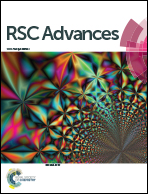Controllable TiO2 coating on the nickel-rich layered cathode through TiCl4 hydrolysis via fluidized bed chemical vapor deposition
Abstract
Surface coating of metal oxides is an effective approach for enhancing the capacity retention of a nickel-rich layered cathode. Current conventional coating techniques including wet chemistry methods and atomic layer deposition are restricted by the difficulty in perfectly balancing the coating quality and scale-up production. Herein, a highly efficient TiO2 coating route through fluidized bed chemical vapor deposition (FBCVD) was proposed to enable scalable and high yield synthesis of a TiO2 coated nickel-rich cathode. The technological parameters including coating time and TiCl4 supply rate were systematically studied, and thus a utility TiO2 deposition rate model was deduced, promoting the controllable TiO2 coating. The FBCVD TiO2 deposition mechanism was fundamentally analyzed based on the TiCl4 hydrolysis principle. The amorphous and uniform TiO2 coating layer is compactly attached on the particle surface, forming a classical core–shell structure. Electrochemical evaluations reveal that the TiO2 coating by FBCVD route indeed improves the capacity retention from 89.08% to 95.89% after 50 cycles.



 Please wait while we load your content...
Please wait while we load your content...